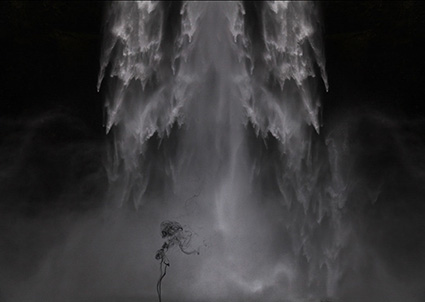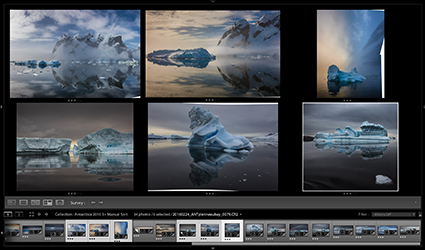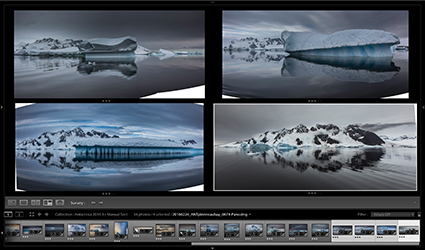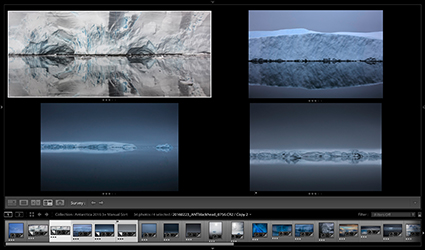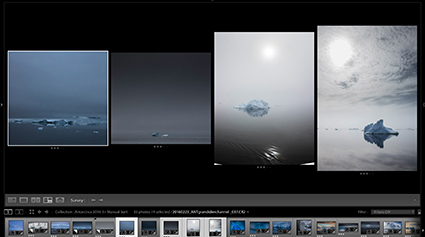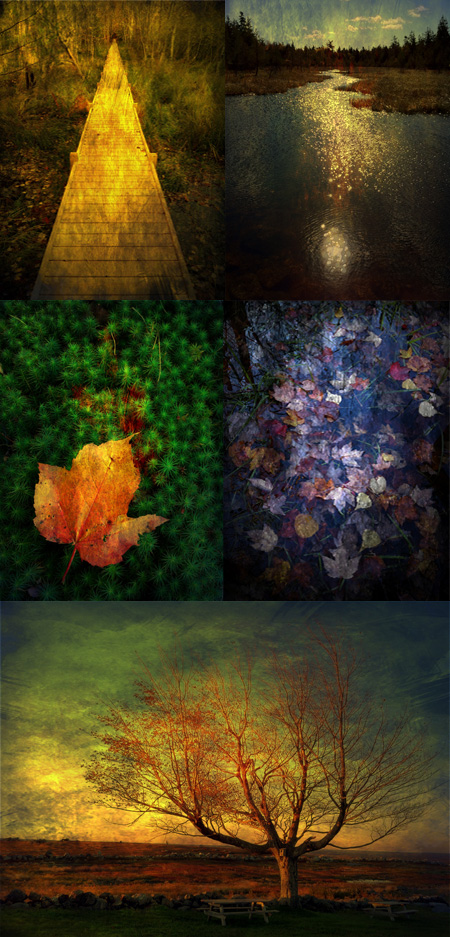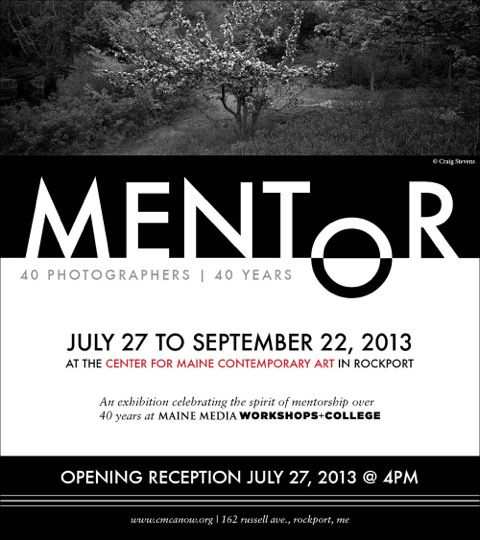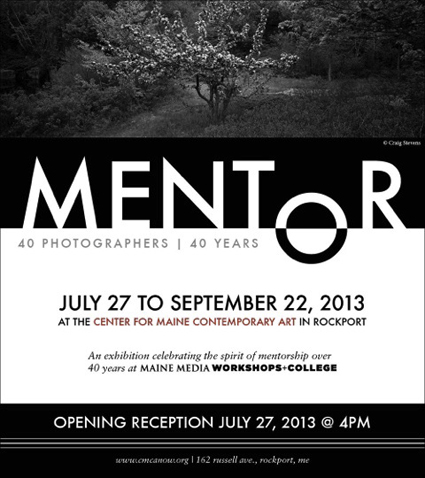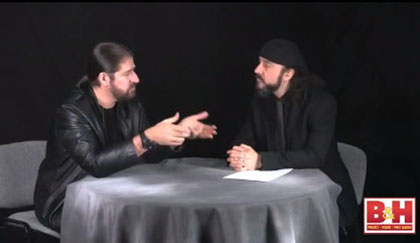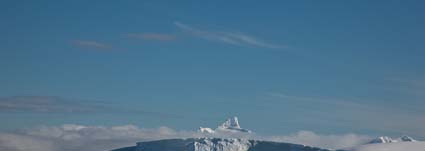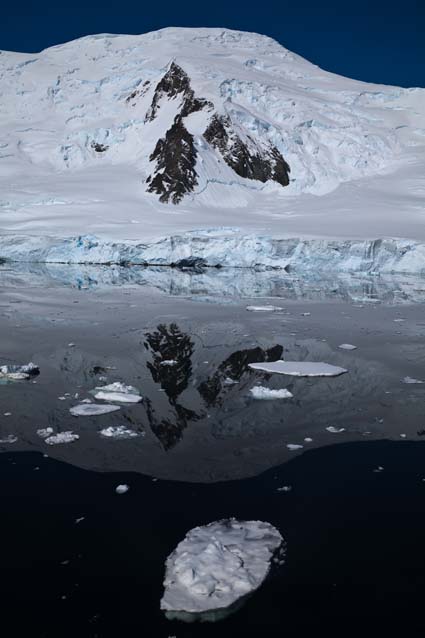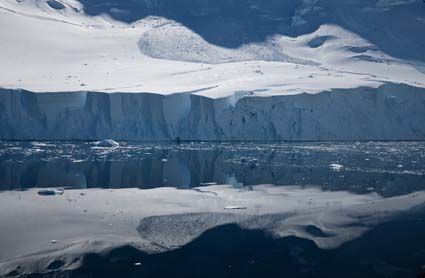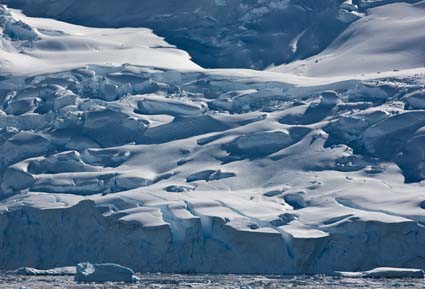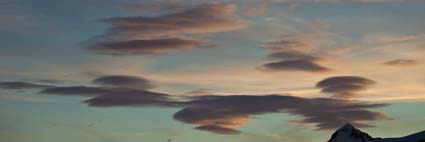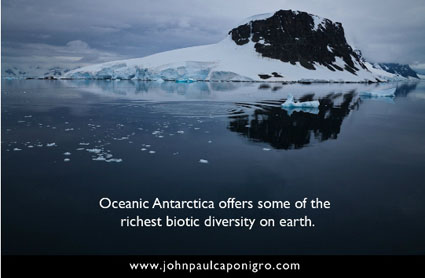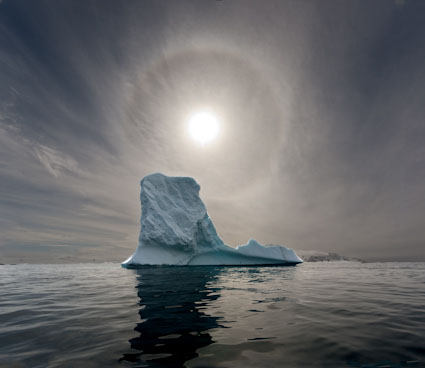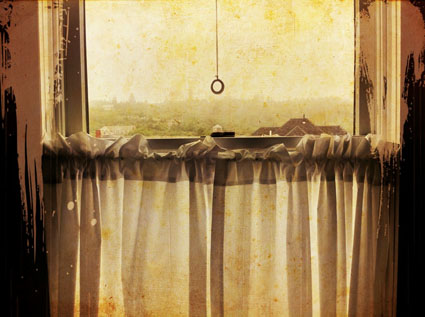A simple project initially, it continues to grow. A single exhibit and book has become multiple exhibits and books, lectures, a website and Antarctic workshop program.
I started using Photoshop 1 as an artist in residence at Kodak’s Center for Creative Imaging. I beta-tested Lightroom 1. I’ve used every version of Photoshop and Lightroom since their initial release. (Lightroom 1 was released during my second voyage to Antarctica.)
Compared to Photoshop’s capabilities, Lightroom’s capabilities are limited. Because the nature of my first Antarctica project was editorial, I was interested in working within stricter limits and Lightroom’s limits fit those. Lightroom also offered the promise of greater organizational capabilities and productivity, which was very useful while handling a high volume of images made on an extended voyage. Lightroom delivered.
Lightroom not only streamlined up my workflow and accelerated my productivity, it also helped me develop my projects conceptually by making it easier to find and organize patterns of thought and create continuities for their presentation. Collecting, comparing, selecting and sequencing images becomes much easier, and this in turn aids more sophisticated storytelling.
Lightroom helps me see my images better. It offers four ways to view your images: Loupe, Compare, Survey and Grid. Moving in and out of these views helps you see your images better both solo and in relationship to each other. Lightroom’s Collections are equally essential for seeing, creating, and refining relationships between images. With Collections I can easily group like images from multiple folders and hard drives, assessing relative strengths and weaknesses, identifying patterns of thought, and creating sequences to advance a story fluidly. Changing how you see your images changes what you see in your images. How you see your images is important. I can think of few things that are as important.
My Antarctica project and Lightroom brought me back to basics. This shift in focus encouraged me to further strengthen both my camera skills and my storytelling practices, and consequently my vision as a whole. This opened new avenues of discovery encouraging me to think about still images even more cinematically.
You can learn more about my Antarctica project – view images in galleries and slideshows, preview books, download screensavers, find facts about the region, read blog entries made live on site, and much more at www.johnpaulcaponigro/antarctica.com.
Sign up for my Antarctica digital photography workshops here.
Sign up for my Antarctica 2013 digital photography workshop by emailing jpc@johnpaulcaponigro.com.


